2023 Event and Festival Report
During the spring and summer of 2023, Substance checked drugs at ten events and festivals across Vancouver Island. The three busiest events were Otherworld, which had the highest volume of samples at 121 (nearly double the number of samples checked at Otherworld 2022), followed by Lamplight Year One (48), and Rifflandia Electic Ave (43). In total, we checked 315 samples from 220 service users, across 10 events. When compared with 2022 event drug checking, we checked 66% more samples and helped 63% more people learn about what was in their substances!
While we may have checked more samples and helped more people than the previous year, it's always interesting to know if those people had accessed drug checking services before. As part of our intake survey we ask whether or not a service user has accessed any drug checking service before. What we found was that 47% of event-goers who made use of our services had not used a drug checking service before (Figure 1). In other words, we helped 102 people access drug checking for the first time. If you compare this to data collected at our storefront service during the months of March 2023 to September 2023, you'll find that only 18% of service users had made use of a drug checking service before. Thus, it's a reasonable assumption to make that event based drug checking helps reach new service users.
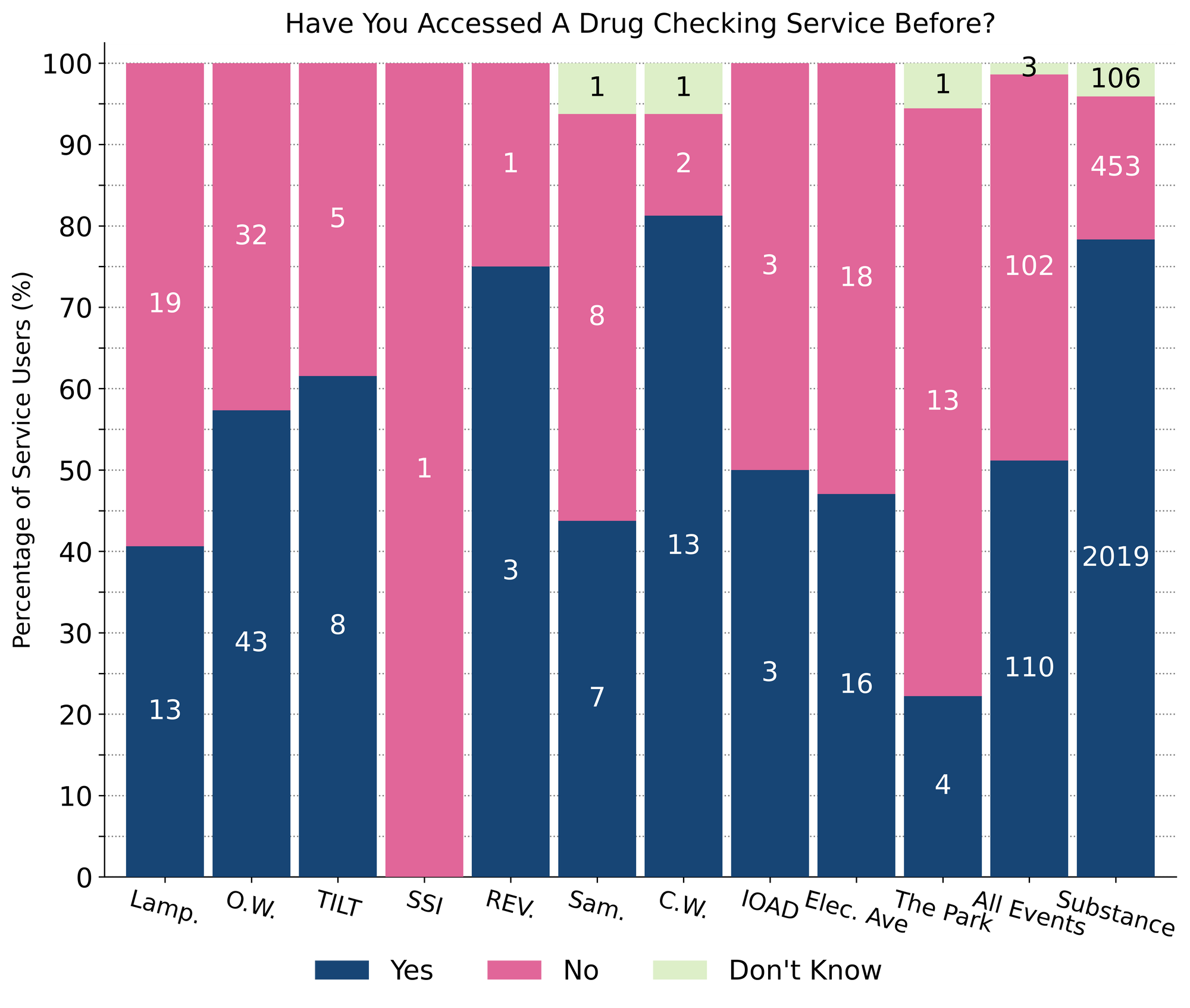
How about post- vs. pre-consumption drug checking? Are event-goers more often checking their substances prior to conusmption or after? Our survey data indcates that 46% of those checking their substances at events are doing so pre-consumption (Figure 2). On the other hand, 40% are checking their substances after already having tried them. Which is roughly equal to what we saw at our storefront service during the spring and summer of 2023.
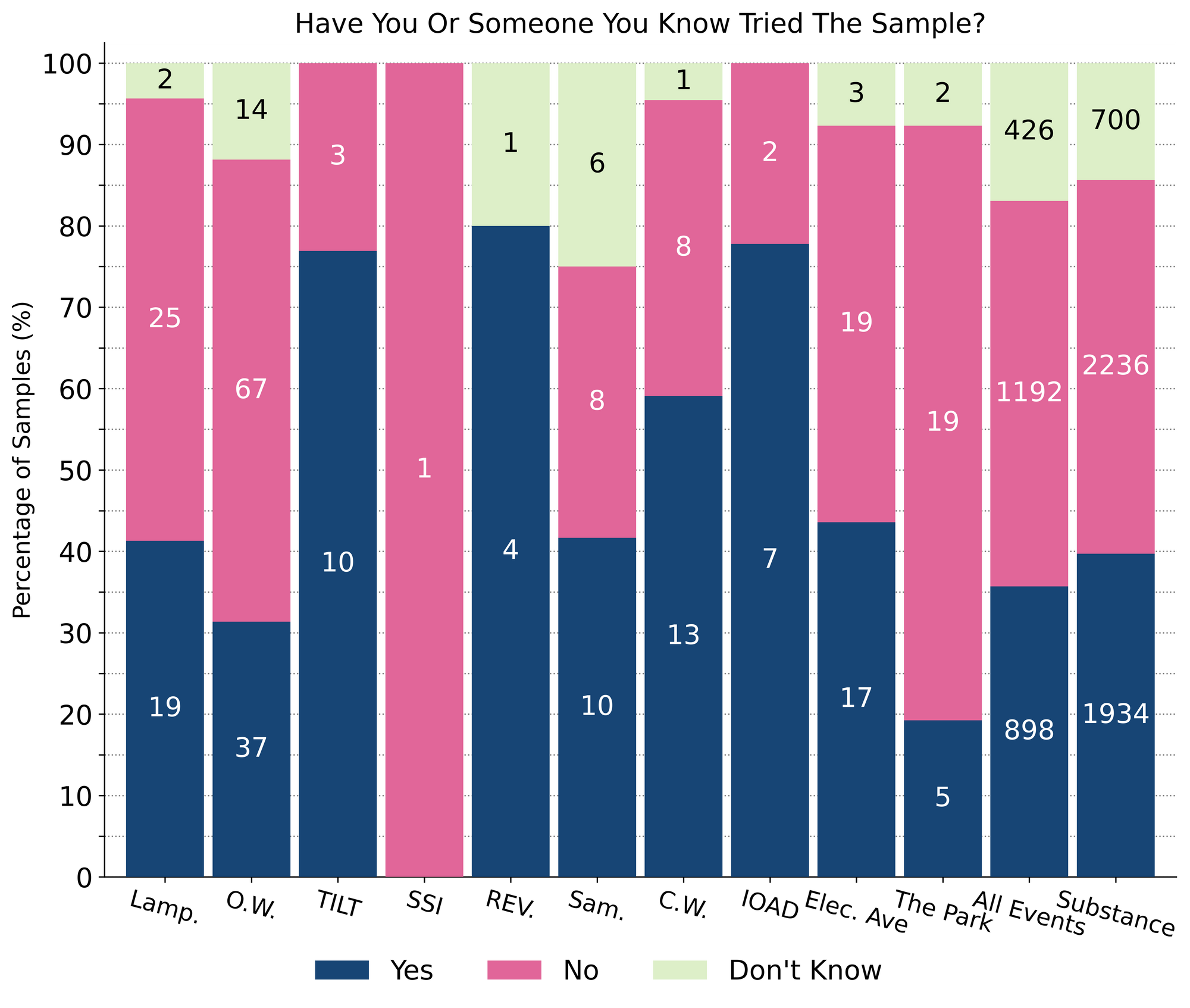
47% of people having their drugs checked did so for the first time at one of these events and 46% of people did so prior to consuming their substance...but why? As part of our intake survey we ask why people are getting their drugs checked, with the following possible answers (and the possibility to select multiple answers):
- "For the safety of myself and/or others"
- "To confirm the active ingredient (to make sure it is what you think it is)"
- "To check for notable adulterants, or contaminants (for example, benzos or fentanyl)"
- "To check the drug to sell"
- "Wanted harm reduction advice"
- "Curious about drug checking"
- "Someone overdosed on it"
- "Don't know"
- "Other"
Figure 3 shows the proportion of total survey responses and number of responses that we obtained for each possible answer, compared to data collected at Substance in the same time frame. The most common answers were: "safety", "confirming the active", and "checking for adulterants". However, we can see the curiosity was a much larger reason why event goers got their substances checked, with just over 30% (67) of respondants having selected "curious about drug checking" as one of their answers, compared to the roughly 8-9% seen at service.
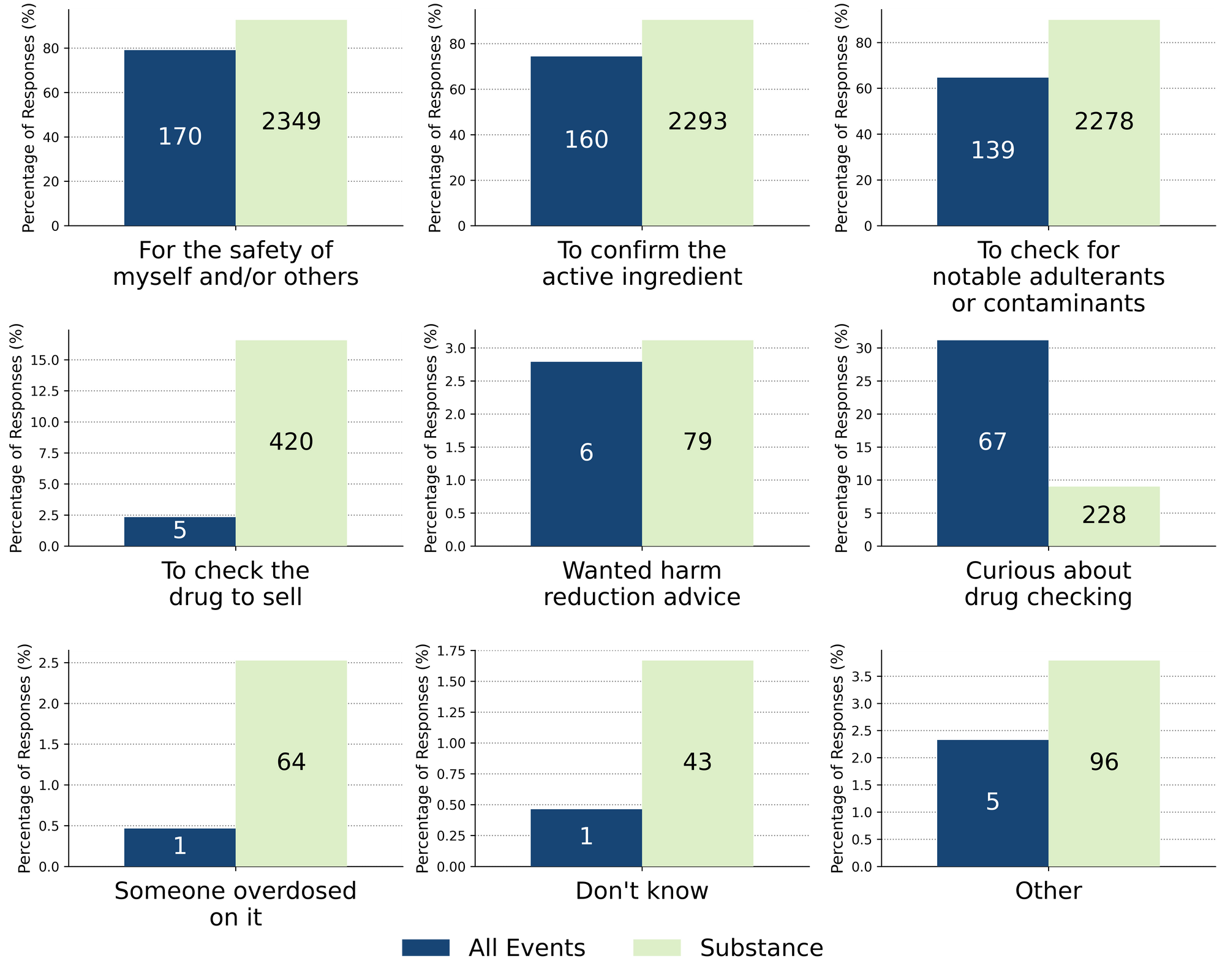
We also asked folks who they checking drugs for, with the possible answers being: "self", "friends", "family", "to sell", "clients", or "other". The main takeaway from Figure 4 is that more than half of the service users at events responded that they were checking their sample for themselves and their friends. When we factor in that nearly half of the service users at events were new to drug checking and that a majority of them were checking for their friends, it really highlights how drug checking at events can reach many new service users, whether they walk into the service tent or not.

Service users brought us a wide variety of substances that can be grouped into different drug classes. Figure 5 aggregates the number of samples we recevied at each event by their "expected" substance (i.e. the drug category reported by the service user). In each bar, the proportion of total samples taken up by each drug class is shown, with the number of sampes checked overlaid in each bar. Overall, the most represented categories were MDMA, cocaine, dissociatives (ketamine), and psychedelics, as is shown in the right most bar.
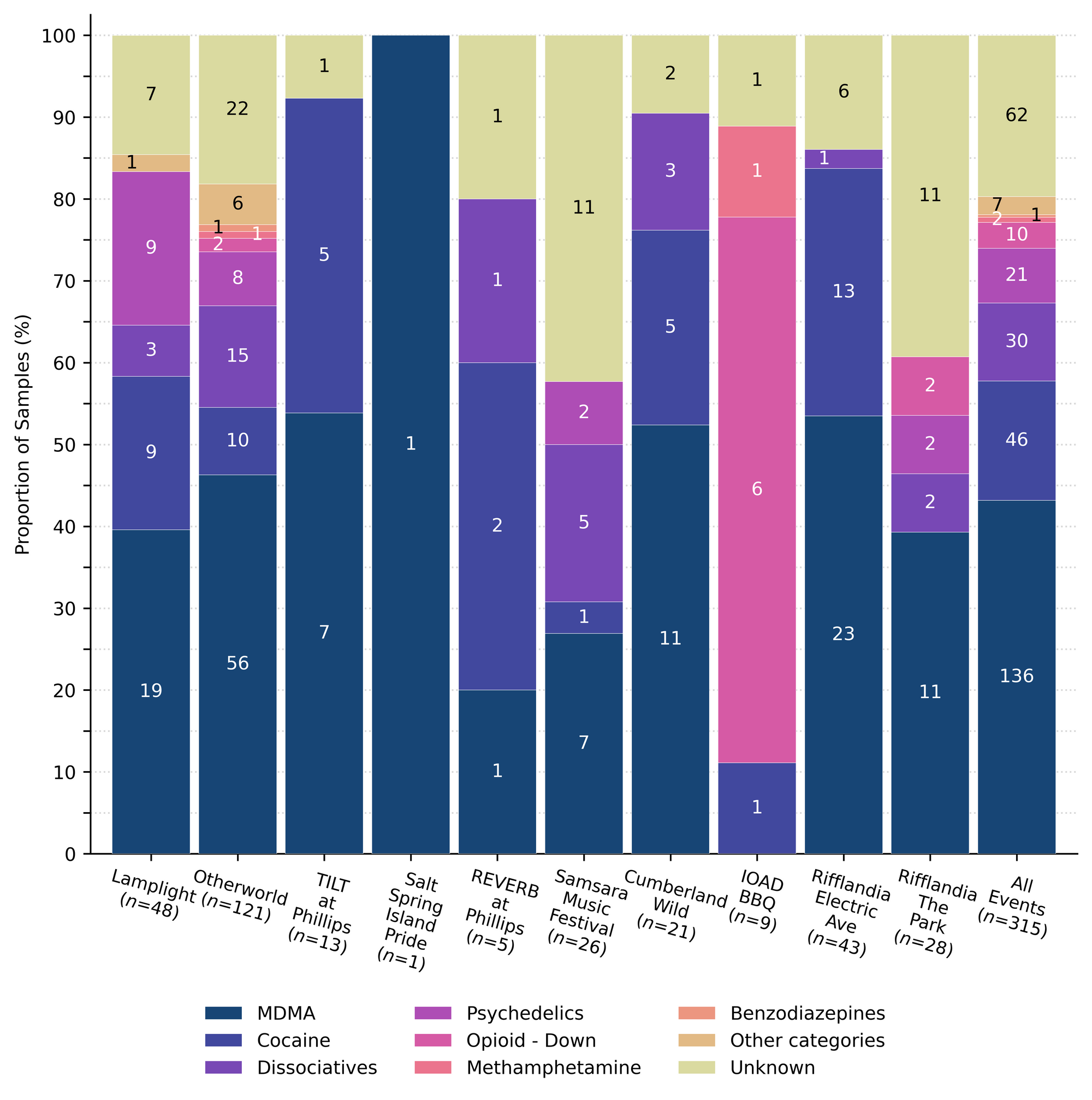
Finally, Figure 6 shows us which composition group samples ended up in after being analyzed. The composition group refers to whether or not the sample was as expected with no other notable compounds detected (dark blue), contained the expected drug and was contaminated with an unexpected active (magenta), did not contain the expected active and instead contained another active (salmon), and finally did not contain any active components (lime). Overall, this figure demonstrates that most samples we checked were as expected. A full breakdown of what we checked and the results that we obtained can be found in the pdf report at the end of this blog post.
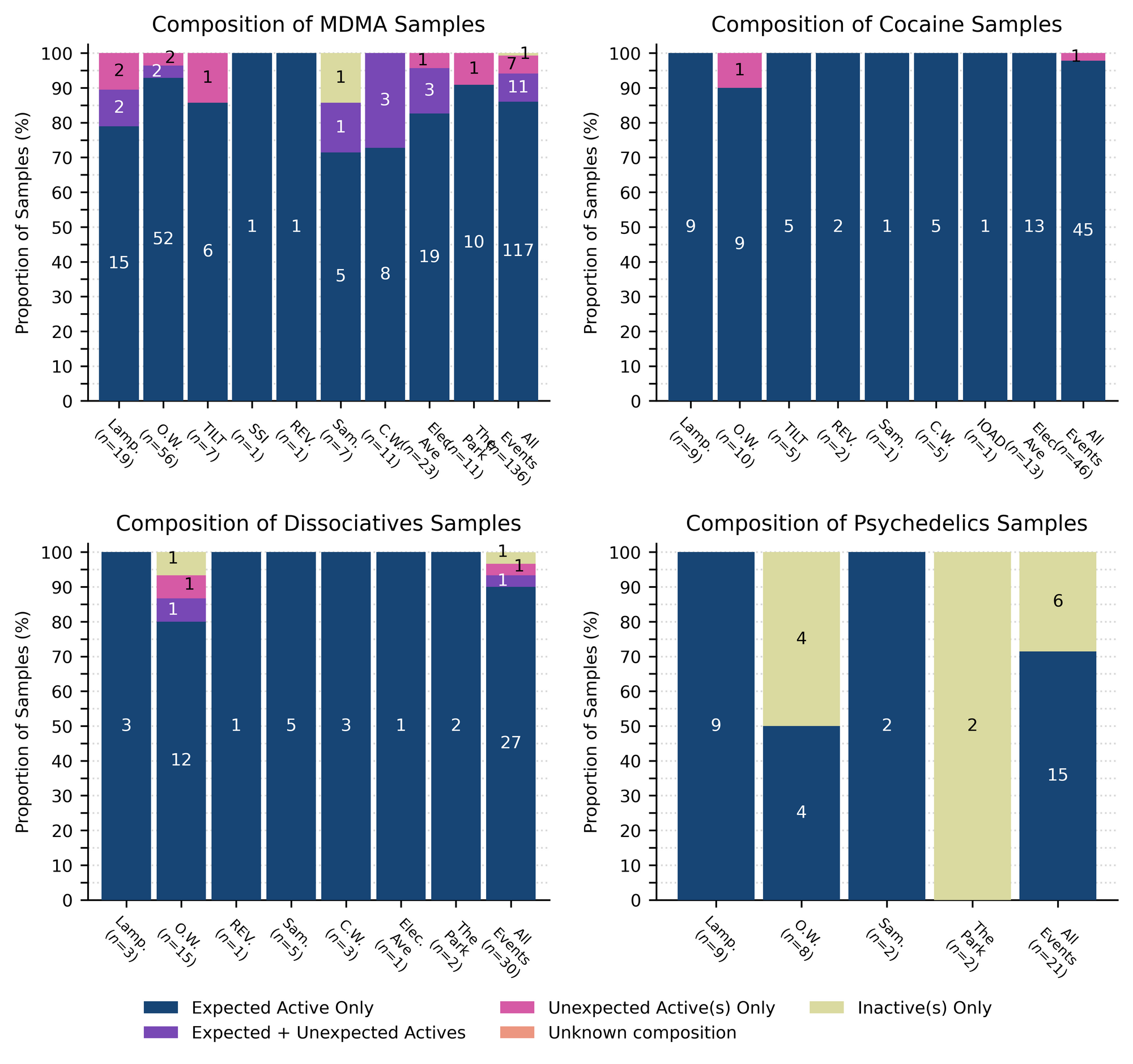
Overall, 2023 event and festival drug checking was a success. It would not have been possible without help from WILD Collaborative Harm Reduction Services, AVI Health and Community Services (specifically the Comox/Courtenay office) and Island Health who provided important funding to make event drug checking a reality. A special thanks also goes out to all the event and festival organizers who invited to their gatherings: Lamplit; Kindle Arts Society & the Otherworld Harm Reduction Team; Phillips Backyard; Diverse and Inclusive Salt Spring Island; Wildlife Division; Cumberland Village Works, Mt. Eliah; QomQem; and Rifflandia.
Want to be notified when we release these reports? Join our mailing list to receive updates about when our reports are out. You can subscribe and unsubscribe yourself from this list at any time.
As always, send us feedback at substance@uvic.ca on how we can continue to offer our drug checking results in a useful way.
